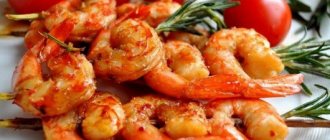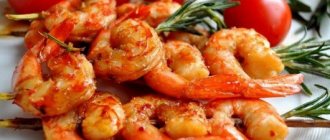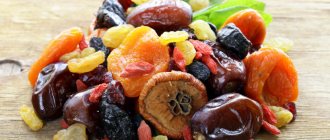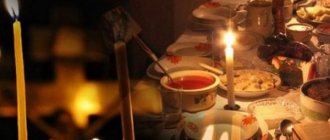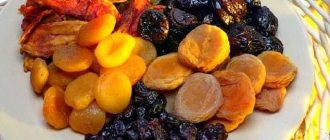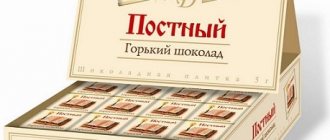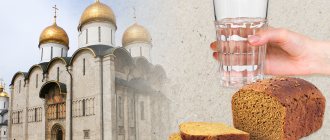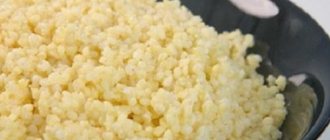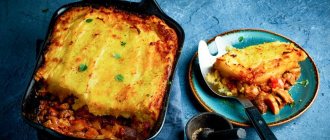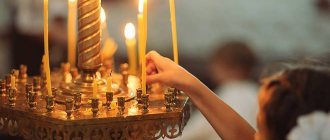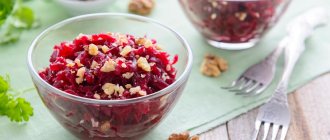As we wrote earlier here , Lent 2021 runs from March 15 to May 1. On the Annunciation, which is celebrated on April 7, and on Palm Sunday, which falls on April 25 , Orthodox Christians who observe fasting can eat fish. It is on the first list of concessions and even seminarians are allowed to eat fish during Lent.
On Lazarus Saturday, April 24, you cannot eat fish, but you can eat fish eggs. At the end of the material - as a bonus - a wonderful recipe with three fish caviar. It is unexpected, but very successful and suitable for the post.
We would also like to note that sometimes the term “oil” is used to describe Lenten food or the rules of Lent, for example, “boiled food with oil.” In this case, oil is lean, that is, vegetable oil. All fish during Lent are allowed to be cooked with it.
Lent in 2022
In 2022, Russians will celebrate Easter on April 24.
Lent, which precedes this bright holiday, lasts 7 weeks and begins on March 7 and ends on April 23. During this period, believers adhere to a special diet that includes a number of food restrictions. The menu for Lent is meager, but lay people are not required to strictly follow the rules. For example, pregnant women, children and the elderly can eat almost any food. Before drawing up a Lenten menu, you should consult a doctor in order to avoid health problems due to strict dietary restrictions.
Features of nutrition during Lent
On fasting days you must adhere to some rules:
- The strictest food restrictions apply in the first and last weeks.
- Milk, meat and eggs are prohibited. They belong to fast food.
- On Palm Sunday and the Annunciation, it is allowed to eat fish; on Lazarus Saturday, caviar is prepared from it.
- On the last Friday you need to completely give up food.
- If the date of veneration of a saint falls during Lent, then the church allows relaxations in the diet. For example, on Monday, Tuesday and Thursday you can eat hot food flavored with butter. If the holiday falls on Wednesday or Friday, then the dishes are eaten without it. It is allowed to wash down food with wine.
Solid weeks
In Church Slavonic, “sedmitsa” is a week - days from Monday to Sunday. Continuous weeks mean no fasting on Wednesday and Friday. They were established by the Church as a relaxation before a multi-day fast or as a rest after it.
The continuous weeks are as follows:
HOLY TIMES - from January 7 to January 18, that is, from the Nativity of Christ to Epiphany.
THE CLINICAL AND THE PHARISEE - two weeks before Lent.
CHEESE (Maslenitsa) - the week before Lent (eggs, fish and dairy are allowed, but without meat).
EASTER (Light) – week after Easter.
TRINITY - the week after Trinity (before Peter's Lent).
Who may not follow the rules
Relaxations are acceptable for those who, due to various circumstances, cannot adhere to strict dietary restrictions.
These individuals are allowed to eat a lighter diet. A number of categories of believers can use it without prior approval from the clergy. These include:
- children under 16 years of age;
- elderly people;
- pregnant and lactating women;
- persons with chronic diseases and poor health.
All other cases require a conversation with a priest. You can confess and ask permission for relief.
Is all fish still banned?
Fish, like animal products, is not included in the list of permitted foods during fasting. The Church strongly recommends that Orthodox people exclude it from the Lenten menu. But fish contains a lot of nutrients that the body requires, so there are concessions for dishes made from it. This product is prohibited for clergy during the entire period of Lent. Only lay people are allowed to eat such food.
Fish during Lent is only allowed to the laity.
Strict fasting and non-strict fasting - what are their differences?
Strict and non-strict fasting differ from each other in the list of lean foods allowed for consumption.
In the first case, not only meat and fish are prohibited, but also all ingredients of animal origin, sweets, baked goods, alcoholic beverages, and large amounts of fried and fatty foods. Porridge, vegetable soups, baked vegetables are the main dishes that can be eaten during strict fasting.
In the second case, seafood, vegetable oil, and some types of sweets are allowed. Mushroom broths, fish soup, salads with lean mayonnaise, and baked goods without eggs are allowed.
On which days of Lent can you eat fish?
During fasting, a calendar is drawn up in which fish days are marked.
They are easy to remember because they fall on the holidays before Easter. In 2022, you can treat yourself to fish dishes only 3 times:
- Palm Sunday - April 17.
- Annunciation of the Virgin Mary - April 7.
- On the eve of Palm Sunday - April 16.
What types of fish can you eat?
Despite the fact that the laity may not adhere to a meager Lenten menu, there are still a number of restrictions. For example, only a few types of fish are allowed. The church recommends sticking to pollock and hake fillets. You can also prepare dishes from pink salmon and carp. They have a low fat content, but have high nutritional value and contain a large number of useful elements necessary for the proper functioning of the body.
It is recommended to choose pollock fillet.
How to cook fish on fish days
On permitted days, fish can be baked in foil with the addition of lemon slices and various spices.
It is not advisable to eat fried food, but you can fry the product in a frying pan, adding a little vegetable oil (butter cannot be used, since dairy products are prohibited during fasting). In addition to baking, fish is allowed:
- use for cooking soup;
- steam;
- simmer in a slow cooker.
Cereals, mushrooms, legumes, and vegetable salads are chosen as a side dish.
Lent
“What is Lent? He is a precious gift to us from our Savior, Who Himself fasted for forty days and nights, neither eating nor drinking; a gift that is truly precious for all those seeking salvation, just as the spruce of spiritual passions dies. By His word and example, the Lord legitimized it to His followers,” says the holy righteous John of Kronstadt.
Lent is the most important and strictest among the fasts. It begins seven weeks before the holiday of Holy Easter and consists of Lent (forty days) and Holy Week (the week before Easter).
Pentecost was established in imitation of the Lord Jesus Christ Himself, who fasted in the desert for forty days, and Holy Week was established in remembrance of the last days of His earthly life, suffering, death and burial. Thus, the total continuation of Lent together with Holy Week is 48 days.
Lent is preceded by three weeks, during which the Holy Church begins to spiritually prepare for it. The first preparatory week - “The Week of the Publican and the Pharisee” - is called “continuous week” because there is no fasting at meals. On Sunday, during the Liturgy, the Gospel “About the Publican and the Pharisee” (Luke 18:10-14) is read. With this parable, the Church teaches us true humility and repentance, without which fasting will be fruitless. Starting from this week and until the fifth week of Great Lent, during the all-night vigil, after reading the Gospel, a prayer is sung, which is listened to on bended knees: “Open the doors of repentance for me...”
In the second preparatory week - “The Week of the Prodigal Son”, Wednesday and Friday are fast. On Sunday at the Liturgy, the parable from the Gospel “About the Prodigal Son” (Luke 15:11-32) is read, which calls on the lost to repent and return to the Lord, with hope for His mercy. In this week, as well as in the two weeks following it, at the all-night vigil after polyeleos, the 136th psalm is sung: “On the rivers of Babylon there is a sad man and a mourner...” He describes the suffering of the Jews in Babylonian captivity and the grief for the lost fatherland, figuratively speaking - about our sinful captivity and that we must strive for our spiritual homeland - the Heavenly Kingdom.
The third preparatory week is called “meat week” or “cheese week”, and popularly called “Maslenitsa”. This week you can no longer eat meat. Wednesday and Friday are not fasting; you are allowed to eat milk, eggs, fish, cheese, and butter. According to the old Russian custom, pancakes are baked on Maslenitsa. The Sunday of “meat-eating week,” according to the Gospel reading, is called “The Week of the Last Judgment” (Matt. 25:31-46). With this reading, the Church calls sinners to repent and do good deeds, reminding us that we will have to answer for all sins. With the beginning of this week, those who are married are ordered to abstain from marital relations.
The last Sunday before Lent is called “cheese empty”: it ends the eating of eggs and dairy products.
At the Liturgy, the Gospel is read with a part from the Sermon on the Mount (Matthew 6:14-21), which speaks of forgiveness of offenses to our neighbors, without which we cannot receive forgiveness of sins from the Heavenly Father; about fasting and about gathering heavenly treasures.
In accordance with this Gospel reading, Christians on this day ask each other for forgiveness for the offenses caused and strive to be reconciled with everyone. Therefore, Sunday is usually called “Forgiveness Sunday.”
The first and last (Holy) weeks of Great Lent are distinguished by their severity, and their services by their duration.
This is a time of special repentance and deep prayers. Believers, as a rule, attend daily services during these weeks.
According to the charter, on Monday and Tuesday of the first week the highest degree of fasting is established - complete abstinence from food; The first eating of food is allowed only on Wednesday, and the second time - on Friday after the Liturgy of the Presanctified Gifts.
These days, dry eating is prescribed, that is, food without oil.
Of course, for the weak, sick, elderly people, pregnant and lactating women, these requirements, with the blessing of the confessor, are relaxed. Starting from Saturday of the first week, you can eat lean food.
Fish is allowed only twice during the entire fast: on the Annunciation of the Blessed Virgin Mary (April 7), if the holiday does not fall on Holy Week, and on the Entry of the Lord into Jerusalem (Palm Sunday). On Lazarus Saturday (the Saturday before Palm Sunday) fish caviar is allowed. If you strictly follow the regulations, then vegetable oil is allowed only on Saturdays (except Saturday of Holy Week) and Sundays.
Features of Lenten worship
– celebration of liturgies only on Saturdays and Sundays; Liturgy is not celebrated on Monday, Tuesday and Thursday. On Wednesdays and Fridays the Liturgy of the Presanctified Gifts is celebrated. The very name of this service suggests that it involves communion with the Holy Gifts, consecrated on the previous Sunday. In the temple, both the black vestments and the special Lenten chanting of chants call for repentance and change in sinful life. The prayer of St. Ephraim the Syrian “Lord and Master of my life...” is constantly heard, which all those praying bow to the ground.
The first four days of Great Lent in the evening in Orthodox churches the great penitential canon of St. Andrew of Crete is read - an inspired work poured out from the depths of a contrite heart. Orthodox people always try not to miss these services, which are amazing in their impact on the soul.
On Friday of the first week after the liturgy, the consecration of “koliv” (boiled wheat with honey) takes place in memory of the Holy Great Martyr Theodore Tiron. This saint appeared in a dream to the Bishop of Antioch, Eudoxius. He revealed to him the secret order of Emperor Julian the Apostate to sprinkle the blood of animals sacrificed to idols on all food supplies and ordered him not to buy anything at the market for a week, but to eat koliv.
first week of Lent is dedicated to the Triumph of Orthodoxy. This celebration was established on the occasion of the final victory of the Holy Church over the iconoclastic heresy. On this day, after the liturgy, a special rite is performed in the church - the rite of the triumph of Orthodoxy. With this rite, the Church anathematizes, that is, excommunicates heretics, enemies of Orthodoxy, from unity with itself, and glorifies its defenders.
The second week honors the memory of St. Gregory Palamas. He is known as an exposer of the heresy of Barlaam, who rejected the Orthodox teaching about the uncreated light.
The third week of Lent is the Worship of the Cross. This week the Holy Cross of the Lord is glorified. For worship and spiritual reinforcement of those undergoing the feat of fasting, the Cross is taken from the altar to the middle of the temple. The week that opens after the Week of the Cross has the same name, and is also called the Week of the Cross, since on Wednesday Lent reaches its midpoint.
The fourth week of Great
On Wednesday, in the fifth week, an all-night vigil is held with the reading of the Great Penitential Canon of Andrew of Crete and the Life of St. Mary of Egypt. For this feature, it is called St. Andrew's station, or the station of Mary of Egypt.
On Saturday of the same week, the akathist to the Most Holy Theotokos is sung, which is established in gratitude for Her deliverance of Constantinople from enemies.
The fifth week of Great Lent is dedicated to the glorification of the exploits of the Venerable Mary of Egypt.
The Saturday before the Feast of the Entry of the Lord into Jerusalem is called Lazarus. On this day, we remember the resurrection of the righteous Lazarus, which was performed by the Lord Jesus Christ as proof of His Divine power and as a sign of our resurrection. The resurrection of Lazarus served as the reason for condemning the Savior to death, therefore, from the very first centuries of Christianity, it was established to commemorate this great miracle just before Holy Week.
The sixth week of Lent is called “Week Week,” colloquially “Palm Sunday” (or Flower Sunday), and the “Entry of the Lord into Jerusalem” is celebrated. The branches of fronds (palm branches) are replaced by willows, since the willow produces buds earlier than other branches. The custom of using vaya on this holiday has its basis in the circumstances of the very event of the Lord’s entry into Jerusalem. Those praying seem to meet the invisibly coming Lord and greet Him as the Conqueror of hell and death, holding in their hands the “sign of victory” - flowering willows with lit candles.
After Palm Sunday come the Great Days, or Holy Week . In the church they read the Gospel of the Passion of Christ (the Suffering of Christ), how He was betrayed by Judas Iscariot, taken into custody, scourged and crucified on the Cross. The fast for this week, like the first, is strict (that is, without oil). And on Good Friday - the day of general mourning for the crucified Savior - it is customary not to eat any food until the end of the liturgical rite of burial of the Shroud of the Lord, that is, a special veil with the image of Christ lying in the tomb. Each day of the week has a name - Maundy Monday, Maundy Tuesday, etc. This week, believers begin to prepare for Easter and try to visit church more often.
On Holy Monday, the Church remembers the drying up of the barren fig tree, from which Jesus Christ did not find true fruit, denounced it and cursed it. This fig tree represents not only the congregation of the Jews, but also every soul that does not bear fruit of repentance. In addition to the story of the withering of the fig tree, the Gospel is read with the parable of the unrighteous winegrowers who killed first their master’s servants, and then his son. The parable depicts the bitterness of the Jews, who first beat the prophets, and then crucified the Son of God who came to earth. With this parable, the Church teaches us not to be like these winegrowers, boldly violating the apostolic and Lord’s commandments and thereby continuing to crucify the Son of God with our sins.
The church service of Maundy Tuesday borrows its content from the parables of the ten virgins, the talents, and from the continuation of the story about the Second Coming of Christ set on Maundy Monday. With these memories, the Holy Church teaches believers spiritual vigilance, especially necessary in the days of empathy with the suffering of the Lord for us; The parable of the talents encourages us to use the abilities and strengths given to us to serve the Lord, especially works of mercy, which He accepts as personal merit to Himself: just as you did it to one of the least of these brothers of Mine, you did it to Me. (Matt. 25:40).
On Great Wednesday, the sinner wife, who did not spare the precious world for the Lord, is glorified, and the love of money and the betrayal of Judas is condemned.
Of all the days of the last week, Great Thursday stands out especially. This day was established by the Church in remembrance of the Last Supper, to which Jesus Christ gathered His disciples on the first day of the Jewish Passover. At this meal, the Savior broke bread and, distributing it to the disciples, said: take, eat: this is my body. And, taking the cup and giving thanks, he gave it to them and said: drink from it, all of you, for this is My Blood of the New Testament, which is shed for many for the remission of sins. (Matthew 26:26-28). Thus, for the first time, Jesus Christ Himself established the sacrament of Communion. Maundy Thursday is also called “Clean Thursday” - on this day Christians, having sincerely repented in confession, approach the Chalice of the Lord with a clear conscience.
On Maundy Thursday in the evening, the “Sequence of the holy and saving Passion of our Lord Jesus Christ” is celebrated in the church. Believers are edified by hearing the complete Gospel story of the Passion of Christ, extracted from the four Gospels and divided into 12 readings.
On Holy and Great Friday there is no liturgy in remembrance of the fact that on this day the Lord Himself offered Himself as a Sacrifice. Only the Royal Hours are celebrated. Vespers is served at the third hour of the day, at the hour of the death of Jesus Christ on the Cross.
At the end of this service, the Shroud is taken out, before which the touching canon “On the Crucifixion of the Lord and the Weeping of the Most Holy Theotokos” is read. Those praying venerate the Shroud and the Gospel placed on top of it. The shroud is in the middle of the temple for three days, reminiscent of the three-day stay of Jesus Christ in the tomb.
(On this day it is allowed to eat food only after the completion of the rite of burial of the Shroud of the Lord.)
The entire service of Holy Saturday represents a touching combination of opposite feelings - sorrow and joy, grief and joy, tears and bright jubilation.
At Vespers, 15 proverbs (texts from Holy Scripture) are read. These proverbs contain almost all the main prophecies and types of the Old Testament relating to Jesus Christ. In the Ancient Church, during the reading of the proverbs of Holy Saturday, the sacrament of Baptism was performed so that those preparing to become Christians could taste the Easter joy along with the faithful. After reading the Apostle, the clergy in the altar change into light clothes.
At the end of the liturgy, before the beginning of the Midnight Office, Easter cakes, Easter cottage cheese, and colored eggs are blessed.
Holy Week ends with the solemn celebration of Easter - the Holy Resurrection of Christ. The resurrection of Jesus Christ from the dead in the flesh is a prototype of the general resurrection from the dead of all people on the Day of the Last Judgment and the promise of eternal life prepared by God for the righteous. This is a holiday for those who, fulfilling the commandments of Christ, crucify with Christ in their earthly life, waging spiritual warfare against passions and sin. Lent is the path to the day of Christ's Bright Resurrection and carries within itself the meaning of the co-crucifixion and co-resurrection of us with Christ.
After the Easter holiday there follows a continuous Easter week. Fasting on Wednesday and Friday Fr. But entering into marital relations these days, according to church rules, is not yet allowed, so that sensual pleasures do not interrupt spiritual joy.
In the period following Easter week from Antipascha to the Feast of Pentecost, fasting on Wednesday and Friday is resumed, but according to the rules, you can eat fish on these days.
Following the day of the Holy Trinity (Pentecost), celebrated seven weeks after Easter, before St. Peter's Fast comes the continuous Trinity Week, during which fasting on Wednesday and Friday is again canceled.
Meals by day during Lent
Each day of fasting has its own rules. But only clergy should strictly observe them. Lay people can introduce additional church-approved foods into their diets.
Monday, Wednesday and Friday
The most difficult days of fasting are when it is forbidden to eat boiled food seasoned with oil. Only dry eating is allowed. You can eat cold foods without oil or drinks.
There are days when eating boiled food is prohibited.
Tuesday and Thursday
Cooking in oil is allowed. You need to use only vegetable - creamy during fasting under the strictest prohibition, since it is a dairy product.
Weekend
On Saturday and Sunday you are allowed to drink 1-2 glasses of wine. You can also add food cooked in vegetable oil to the menu.
April
The lay people's nutrition calendar in April will be limited by strict rules: only food of plant origin is allowed. This month, believers celebrate three great celebrations.
These include:
- Annunciation (7.04),
- Palm Sunday (17.04),
- Bright Resurrection of Christ (24.04).
On April 7 and 17, you can indulge yourself: arrange fish days. 17.04 you can drink a small amount of red wine. April 16 (Lazarev Saturday) you are allowed to enjoy caviar.
Continuation of Lent
Strict abstinence must be adhered to during Lent 2022 on the following dates:
| Dates | What is allowed |
| 1.04 | Dry eating is allowed |
| 2.04 | Cooked food with added oil |
| 3.04 | Cooked food with added oil |
| 4.04 | Dry eating is allowed |
| 5.04 | Cooked food, no oil |
| 6.04 | Dry eating is allowed |
| 7.04 | Fish dishes |
| 8.04 | Dry eating is allowed |
| 9.04 | Cooked food with added oil |
| 10.04 | Cooked food with added oil |
| 11.04 | Dry eating is allowed |
| 12.04 | Cooked food without added oil |
| 13.04 | Dry eating is allowed |
| 14.04 | Cooked food without added oil |
| 15.04 | Dry eating is allowed |
| 16.04 | It is allowed to add caviar to the diet |
| 17.04 | Fish day, glass of wine allowed |
Holy Week
According to the church calendar, Holy Week begins on April 18.
For laypeople under strict restrictions, meals should be planned according to the following rules:
| Dates | What is allowed |
| 18.04 | Dry eating is allowed |
| 19.04 | Dry eating is allowed |
| 20.04 | Dry eating is allowed |
| 21.04 | Cooked food with added oil |
| 22.04 | Eliminate any foods from the diet, only clean water is allowed |
| 23.04 | You can drink water and eat bread |
How can you replace fish in your diet?
There are several days during Lent when you are allowed to cook fish dishes.
But sometimes people do not eat church-approved foods because of an allergic reaction or other reasons. Fish contains vitamin D, which helps absorb calcium. But you can also get it by staying in the sun for 10-15 minutes 2-3 times a week.
To compensate for the deficiency of other useful elements that make up fish, you can introduce legumes, cereals or mushrooms into the diet without risk to health.
General provisions of the Orthodox charter on meals
The Orthodox Charter does not require more than 2 meals a day. The first meal is usually served after the Divine Liturgy, i.e. around noon, and the second - after Vespers, i.e. In the evening. If there is only one meal, then it is usually offered at the 9th hour, Byzantine time.
All time instructions of the Typikon are based on the Byzantine principle of time calculation. This principle tied the clock to sunrise and sunset. Currently, it continues to operate on Mount Athos. According to the Byzantine clock, the time from sunrise to sunset was divided into 4 watches of the day, and also the time from sunset to sunrise into 4 watches of the night. Each watch consisted of 3 hours. Accordingly, the 1st hour of the day began with sunrise, and the 12th hour of the day ended with sunset. There is a tradition of approximately translating this system to modern clocks, when the 1st hour of the day according to the Typikon corresponds to 6 o’clock in the morning in our understanding, and the 1st hour of the night corresponds to our 6 o’clock in the evening (18.00). We will also adhere to this generally accepted tradition, indicating the approximate time when we are supposed to have a meal according to the Typikon.
With regard to the quality of food, the following types of meals can be distinguished ( listed in order of increasing severity of fasting):
- Permission “for everything” or “at the table of the brethren there is great consolation.” No restrictions (only the non-eating of meat by monks in all cases is preserved)
- Abstinence only from meat, all other foods are allowed (this happens for the laity only on Cheese Week - i.e. Maslenitsa)
- Abstinence from meat, eggs and dairy products, but fish is allowed (and, naturally, hot vegetable foods, vegetable oil, wine)
- Abstinence from meat, eggs, milk and fish. Hot vegetable food is allowed - “boiled” (i.e. heat-treated - boiled, baked, etc.) with vegetable oil and wine.
- Abstinence also from vegetable oil and wine. Hot food without oil is allowed.
- Xerophagy. “Bread and water and the like” are allowed (chapter 35), i.e. raw, dried or soaked vegetables, fruits (in the Typikon, for example, raisins, olives, nuts (chapter 36), figs, i.e. figs are offered) – “one thing every day” (chapter 36), i.e. every time one of these.
- Complete abstinence from food and drink is what is actually called “fasting” in the Typikon.
Naturally, a less strict regulation allows everything that is possible with a more strict fast. That is, for example, if according to the regulations fish is allowed, then of course you can eat vegetable oil, and if dairy products are allowed, then you can also eat fish.
In the Byzantine tradition, wine was consumed everywhere, mostly diluted with hot water, and was considered a natural component of a regular meal. This explains the fairly frequent permission to drink wine in the meal regulations. Naturally, we are talking only about natural grape wine without added alcohol or sugar. The measure of wine is specified very clearly: from 1 to 3 krasovul (i.e. bowls). Also the statute of (Chapter 35), i.e. that abstinence from wine, even on those days when it is permitted by statute, is highly commendable.
The order of the meal, especially during the Nativity and Peter the Great fasts, is closely related to the rank, i.e. degree of holidays. From the point of view of the rules of fasting, the following three categories of church holidays are important: I - vigils, II - polyeleos and with doxology, III - small.
In the Typikon, the general order of the meal is described in chapter 35. Additions and clarifications regarding meals on holidays and fasts are given in chapters: 32, 33, 34, 36, as well as in the month book itself (chapter 48), where instructions are given regarding the Nativity Lent and the order of meals on specific holidays are given. There are also instructions about the meal in chapters 49 and 50 - “On Pentecost” and “On Pentecost” and 51 “The beginning of the Lent of the glorious and all-praised Apostle Saints (Peter and Paul).” We will try to coordinate all these instructions into a common system.
Recipes for cooking fish during Lent
There are a large number of different dishes that can be prepared during Lent.
Baked
To prepare you will need:
- pink salmon - 1 kg;
- onion - 1 pc.;
- carrots - 300 g;
- pepper - 300 g.
Baked pink salmon has a mild taste.
Procedure:
- Gut the fish, rinse thoroughly, and cut into large pieces.
- Rub with salt and place in a special baking dish.
- Place finely chopped vegetables on top and add salt.
- Cover with foil and place in the oven for 40 minutes, preheated to 180°C.
- Before serving, sprinkle the dish with chopped green onions.
Fish in batter
To prepare the dish you will need:
- flour - 100 g;
- water - 100 ml;
- fish - 1 kg.
The batter evokes associations with milk, eggs and butter, but during Lent you can prepare a lighter version. Dissolve salt in water, add flour, mix well. Dip the washed pieces of fish into batter and fry over low heat until cooked.
Fish in batter always turns out juicy.
For variety, it is possible to add cooked cereals, such as rice, to the batter. To make the dough fluffy, pour a little soda into the flour through a sieve.
Fish salad
To prepare the salad you will need:
- rice - 1 tbsp.;
- fresh cucumber - 1 pc.;
- Chinese cabbage - 300 g;
- lean fish fillet - 500 g.
Procedure:
- Cook the rice.
- Cook the herring in a double boiler, cut into small pieces.
- Chop cucumbers and cabbage into strips.
- Combine all ingredients in a cup, season with lean mayonnaise, add a little soy sauce (to taste).
Fish salad is prepared with rice and Chinese cabbage.
For the sauce you will need:
- flour - 0.5 tbsp;
- water - 0.5 tbsp;
- vegetable oil - 3 tbsp;
- lemon juice - 1 tbsp;
- sugar and salt - 1 tsp each.
Preparation:
- Pour flour into a double bottom pan and add water.
- Mix well and cook over low heat until the mixture becomes thick.
- Cool the mixture, add the remaining ingredients, and beat until smooth.
This mayonnaise can be stored for several days.
Fish roe
During Lent, a separate day is set aside for fish caviar - the Saturday before Palm Sunday (April 24, 2022). It is allowed to eat a small amount of the dish, for example at dinner. You can eat red and black caviar. The main thing is not to abuse it, since this will definitely not add health, but it will demonstrate how difficult it is for a fasting person to cope with his own desires.
Fish eggs are eaten before Palm Sunday.
Fish soups
Fish recipes for Lent can include various dishes, including soups. To prepare a healthy and nutritious meal, you will need:
- white fish fillet - 600 g;
- tomato - 2 pcs.;
- onions - 1 pc.;
- lemon juice;
- greens and garlic.
Preparation:
- Cut pollock or hake into large cubes.
- Blanch the tomatoes, remove the skins and chop finely.
- Pour a small amount of oil into the pan and fry the onion until transparent, add chopped garlic and spices (optional).
- Place the fish in the vegetable mixture, add salt and pour 1.2 liters of water.
- Bring the broth to a boil, reduce heat and simmer for 7-10 minutes.
- Then pour in lemon juice and add herbs. Mix well and turn off the stove. Leave the dish to simmer under the lid closed for 5 minutes.
Fish soup is a healthy and nutritious dish.
What products can be used in preparing Lenten dishes?
List of foods you can eat during Lent:
- Vegetables raw, stewed, pickled, and in some cases fried: potatoes, cabbage, carrots, beets, radishes, pumpkin, sweet peppers, onions, garlic.
- Pasta cooked without eggs or butter.
- Celery root, parsley, earthen pear, rutabaga. They can be eaten not only raw, but also stewed and sautéed in mushroom sauce.
- Greens: basil, cilantro, dill, parsley leaves, sorrel, onion, lettuce.
- Sea kale.
- Any types of legumes: beans, nagut, peas, lentils, soybeans.
- Lavash, lean pancakes, unleavened flatbread.
- Stewed, pickled, boiled or fried mushrooms.
- Cereals prepared without milk or butter. Among them, it is worth highlighting the especially useful ones - rice, oats, pearl barley, corn grits, millet, buckwheat.
- Drinks: dried fruit compote, tea, coffee, soy milk, freshly squeezed juice.
- Any types of nuts and seeds.
- Black, rye, whole grain bread.
Despite the absence of a ban, it is better to exclude freshly squeezed juice, pickled and pickled vegetables from what you can have for breakfast during Lent. During a period of limited nutrition, the stomach is half empty, especially in the morning. Therefore, such products can provoke gastritis, an upset gastrointestinal tract.
